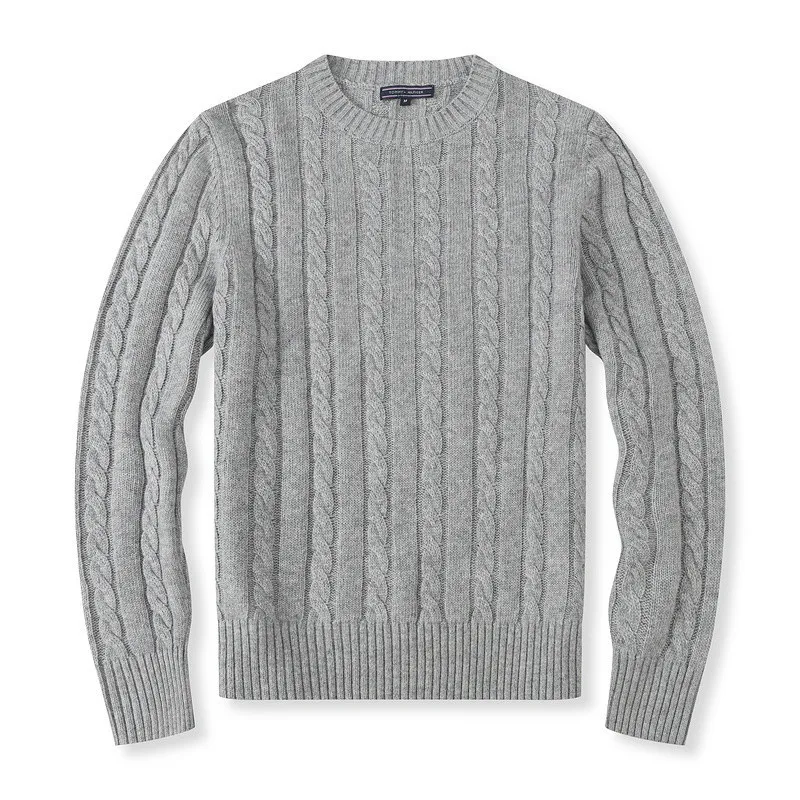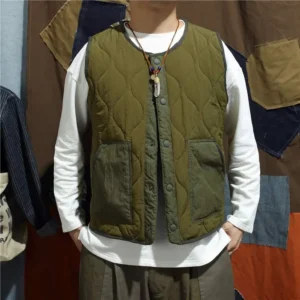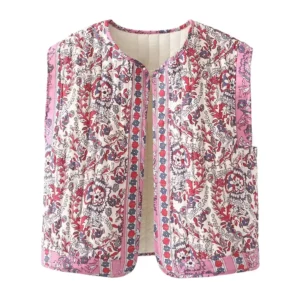Introduction: Understanding the Impact of Neckline Choice
The neckline of a garment might seem like a small detail, but it has a significant impact on your overall appearance and comfort. This seemingly minor design element can transform how your face looks, how your body proportions appear, and even how suitable your outfit is for different occasions.
Necklines have been evolving throughout fashion history, with certain styles rising and falling in popularity over decades. Today, two styles remain consistently popular classics: the V-neck and the crew neck (also known as round neck or O-neck). While both are wardrobe staples, they serve different purposes and flatter different features.
When choosing between these neckline styles, several factors come into play:
- Your face shape and neck length
- Your body proportions and frame
- The occasion and level of formality
- Your personal style and comfort preferences
- Seasonal appropriateness and layering needs
Understanding the differences between V-neck and crew neck styles isn’t just fashion minutiae—it’s a practical tool for building a more flattering, versatile wardrobe that works for your unique features and lifestyle.
In this comprehensive guide, we’ll explore everything you need to know about these two classic necklines, from their basic design elements to advanced styling techniques. Whether you’re building a capsule wardrobe or simply wondering which sweater style to choose for your next purchase, this information will help you make informed decisions that enhance your personal style.
The Anatomy of Necklines: V-Neck vs. Crew Neck Defined
Before diving into styling recommendations, it’s essential to understand the fundamental differences between these two neckline styles. The ultimate guide to cashmere necklines provides comprehensive information, but here we’ll focus specifically on V-necks versus crew necks.
The Classic Crew Neck: Design and Characteristics
The crew neck (also called round neck or O-neck) features a rounded, collarless neckline that sits at the base of the neck. This circular opening follows the natural curve where your neck meets your shoulders, creating a clean, simple line.
Key characteristics of the crew neck include:
- Circular shape that follows the natural neckline
- Typically sits at or just below the base of the neck
- Usually includes ribbed trim for structure and durability
- Provides full coverage of the chest and collar bone area
- Creates a horizontal visual line across the upper body
The crew neck originated in athletic wear, specifically as part of the standard uniform for crew teams (hence the name). It gained mainstream popularity in the early 20th century through military undershirts and casual sportswear before becoming the standard t-shirt neckline we know today.
Standard crew necks typically measure about 1-1.5 inches in height for the ribbed collar portion, though this can vary. In cashmere sweaters, the crew neck often features a slightly more substantial or double-layered finish to maintain structure over time.
Common variations include:
– Standard crew: The classic rounded collar sitting at the base of the neck
– High crew: Sits slightly higher on the neck for added warmth
– Relaxed crew: Slightly wider opening for a more casual look
– Ribbed crew: Features pronounced ribbing for visual texture and durability
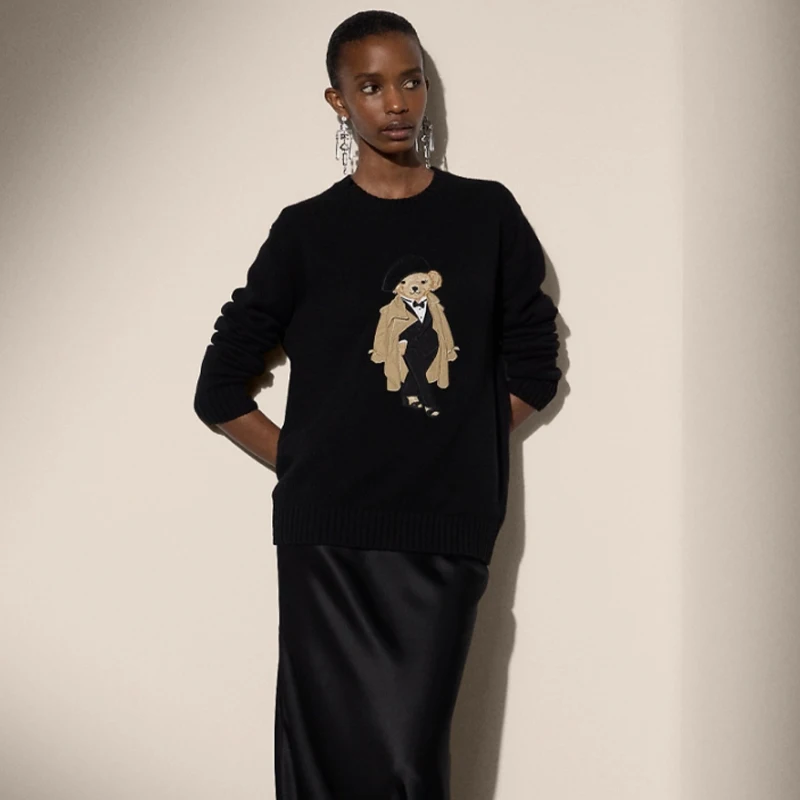
The Versatile V-Neck: Design and Characteristics
The V-neck, as its name suggests, features a neckline that forms a “V” shape at the front of the garment. This angular opening creates a distinctive line that draws the eye downward from the neck.
Key characteristics of the V-neck include:
- Angular shape forming a “V” at the center front
- Variable depth options (shallow, medium, or deep)
- Often finished with ribbed trim or binding
- Exposes more of the upper chest and collar bones
- Creates a vertical visual line down the upper body
The V-neck began as a more formal alternative to crew necks, frequently appearing in sweater vests and tennis sweaters. Over time, it transitioned into everyday wear, becoming especially popular in the 1960s and maintaining consistent presence in both casual and business wardrobes ever since.
The depth of a V-neck can vary significantly:
– Shallow V: Extends just below the base of the neck (most conservative)
– Medium V: Reaches approximately 2-3 inches below the neck (standard)
– Deep V: Extends 4+ inches down the chest (more dramatic, often casual)
The construction of V-necks requires more technical skill than crew necks, particularly at the bottom point of the “V” where reinforced stitching is necessary to prevent unraveling. In premium garments like those from men’s V-neck cashmere sweater collections, this area receives special attention to ensure durability while maintaining a clean line.
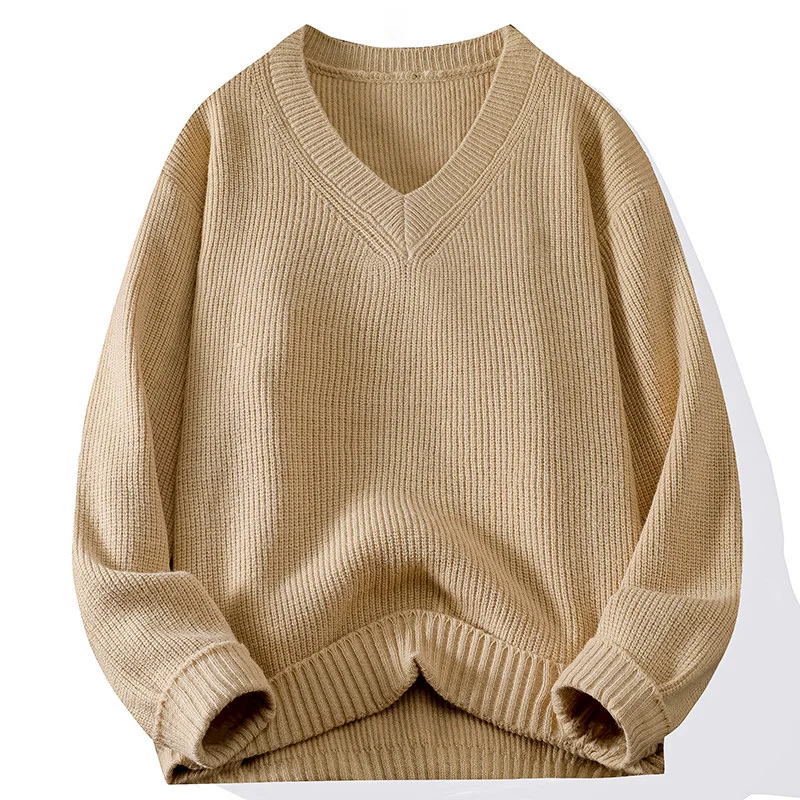
Direct Comparison: Key Differences at a Glance
| Feature | V-Neck | Crew Neck |
|---|---|---|
| Visual Impact | Creates vertical line, drawing eye downward | Creates horizontal line across chest and shoulders |
| Face Effect | Opens up face, creates illusion of length | Frames face, creates structured appearance |
| Formality | Ranges from casual to business formal | Typically more casual, though context-dependent |
| Chest Exposure | Reveals more collar bone and upper chest | Covers chest completely |
| Layering Function | Works well over visible undershirts/collars | Better as a base or standalone layer |
| Accessorizing | Showcases necklaces and pendants | Better with scarves, statement earrings |
The fundamental difference between these styles extends beyond mere appearance—each creates different visual effects that can enhance or minimize certain features. While both necklines are versatile enough to work in most wardrobes, understanding their distinct characteristics and optimal applications helps you leverage their strengths for your specific needs.
Body Type and Face Shape Compatibility
Necklines are powerful tools for creating optical illusions that enhance your natural features. The right neckline can elongate a short neck, balance broad shoulders, or add definition to your upper body. When selecting flattering necklines for your body type, consider both your proportions and what features you’d like to highlight or downplay.
Who Benefits Most from V-Necks: Body Types and Features
V-neck styles create a vertical line that draws the eye downward, making them particularly flattering for:
- Round or square face shapes: The angular opening contrasts with and softens fuller face shapes
- Shorter necks: The open space visually extends the neck, creating an elongating effect
- Broader chest and shoulders: The downward pointing angle narrows wide upper body proportions
- Shorter torsos: Creates illusion of length through the vertical visual line
- Fuller figures: The elongating effect creates a slimming visual impression
The depth of the V-neck should be proportional to your height and neck length. Taller individuals can generally wear deeper V-necks without appearing unbalanced, while those with shorter statures might prefer a more moderate V-depth.
For those with prominent collar bones or elegant shoulders, a V-neck draws attention to these features in a flattering way. This makes women’s V-neck cashmere sweaters particularly popular for highlighting elegant décolletage while maintaining sophistication.

Who Benefits Most from Crew Necks: Body Types and Features
Crew neck styles create a horizontal line that broadens the appearance of the upper body, making them ideal for:
- Narrow or long face shapes: The rounded line softens angular features and balances proportions
- Long necks: The higher neckline shortens the appearance of a long neck
- Narrower shoulders: The horizontal line creates the illusion of broader shoulders
- Longer torsos: Breaks the vertical line of the body, creating balanced proportions
- Athletic builds: Showcases well-developed shoulders and pectoral muscles
Crew necks provide a clean, minimalist appearance that works particularly well for those with elegant collar bones who prefer more coverage than a V-neck offers. They’re also excellent for balancing proportions on those with narrower shoulders but wider hips.
The versatility of crew necks makes them universally appealing, though their specific effects vary by body type. Understanding how different neckline styles interact with your features allows you to make more deliberate, flattering wardrobe choices.
Styling Mastery: Creating Cohesive Outfits with Each Neckline
Once you understand which neckline works best for your features, the next step is creating cohesive outfits that maximize these benefits. The right styling approach can enhance the natural advantages of each neckline while creating versatile looks for different occasions.
When building outfits around specific necklines, consider:
– The overall silhouette and proportions
– Color harmony and contrast levels
– Texture combinations and visual weight
– Accessory placement and scale
– Seasonal appropriateness and layering potential
Developing skill in pairing cashmere with denim and other styles opens up countless outfit possibilities regardless of which neckline you prefer.
V-Neck Styling Strategies: From Casual to Formal
The V-neck’s versatility allows it to transition seamlessly between casual and formal contexts with the right styling approach:
Casual V-Neck Styling:
– V-neck sweater + slim jeans + minimal sneakers = effortless weekend look
– V-neck tee + chinos + leather jacket = elevated casual with edge
– Oversized V-neck sweater + leggings + ankle boots = comfortable yet put-together
Business Casual V-Neck Approaches:
– V-neck sweater + button-up shirt (with collar visible) + tailored trousers
– V-neck lightweight knit + pencil skirt + pumps
– V-neck sweater vest + crisp shirt + dress pants
Formal V-Neck Applications:
– Deep V cashmere sweater + statement necklace + tailored pants
– Shallow V-neck knit + blazer + dress trousers
– Fine-gauge V-neck sweater under a suit (instead of waistcoat)
Accessorizing V-Necks:
V-necks create the perfect frame for necklaces, particularly pendants that echo and extend the V-shape. For maximum impact, match the pendant’s placement to the bottom point of the V. Longer chains work particularly well, especially when styling V-neck cashmere for elegant occasions.
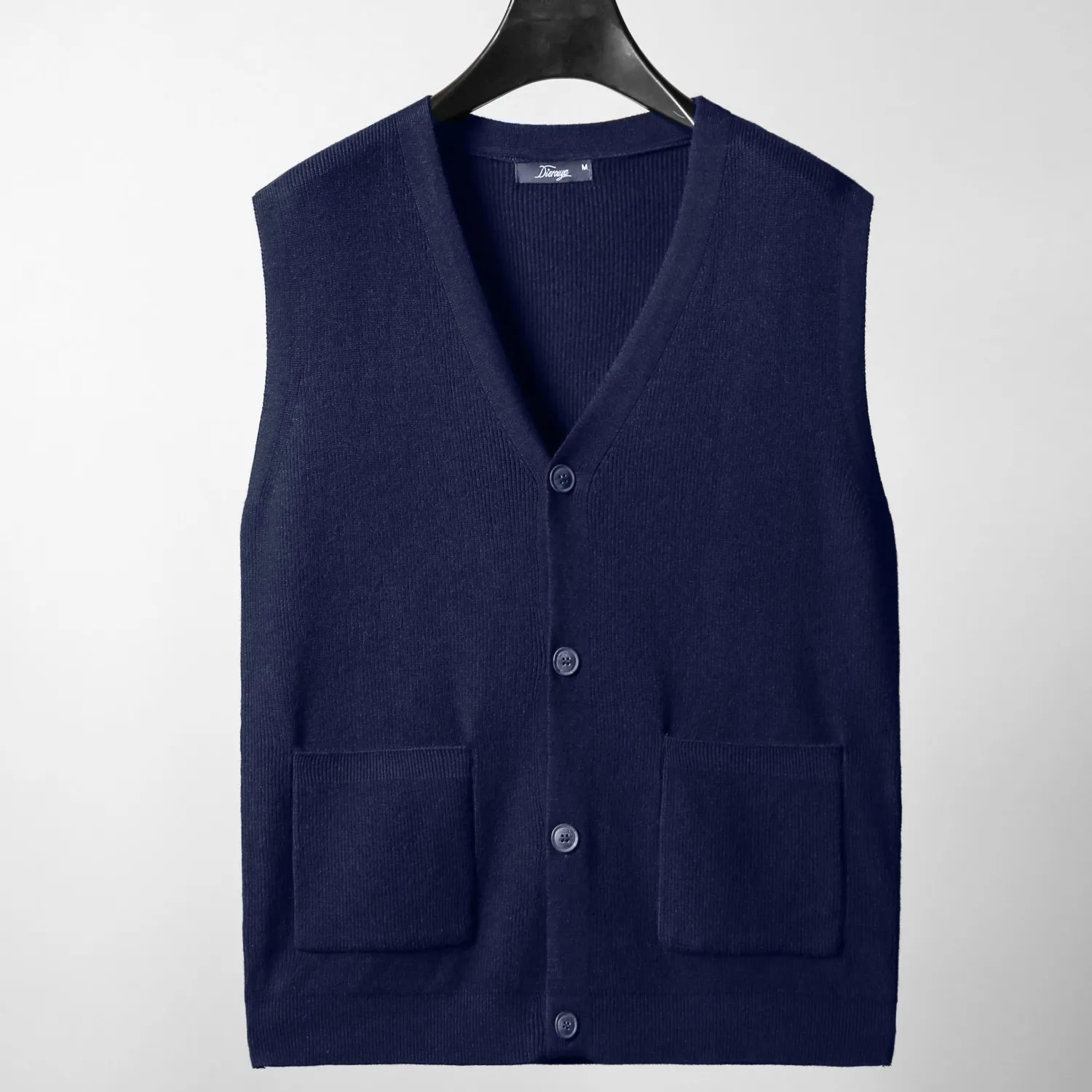
Crew Neck Styling Strategies: Versatile Applications
Crew necks offer clean, versatile styling options across various dress codes:
Casual Crew Neck Combinations:
– Crew neck sweater + dark jeans + Chelsea boots = timeless weekend look
– Crew neck tee + utility jacket + chinos = modern casual with structure
– Oversized crew neck knit + slim pants + loafers = relaxed sophistication
Athleisure and Active Styling:
– Crew neck sweatshirt + performance joggers + athletic shoes
– Fitted crew neck tee + track jacket + slim sweatpants
– Technical crew neck base layer + quarter-zip pullover
Professional Environment Approaches:
– Crew neck sweater + button-up shirt (collar tucked in) + dress pants
– Crew neck fine knit + blazer + tailored skirt
– Monochromatic crew neck + matching trousers = modern minimalist look
Accessorizing Crew Necks:
Crew necks create a clean canvas for statement earrings, scarves, or bold eyewear. The balanced horizontal line also works well with brooches or pins placed at the shoulder. Browse crew neck cashmere outfit inspirations for more ideas on accessorizing these versatile pieces.
The textural interest of brushed cashmere sweaters adds another dimension to crew neck styling, creating visual depth even in simple, monochromatic outfits.
Material and Fabric Considerations
The material of your garment significantly impacts how a neckline looks, feels, and performs. Premium fabrics not only enhance comfort but also improve how the neckline drapes and maintains its shape over time. When choosing the perfect cashmere neckline, material quality becomes particularly important.
| Fabric | V-Neck Performance | Crew Neck Performance |
|---|---|---|
| Cashmere | Drapes elegantly, maintains soft V-shape | Holds structure while remaining soft |
| Cotton | Casual appearance, may stretch over time | Maintains shape well, especially with ribbing |
| Merino Wool | Versatile drape, holds shape with movement | Excellent structure retention, smooth appearance |
| Silk Blends | Creates luxurious flowing V-line | Can appear too delicate without proper reinforcement |
| Synthetic Blends | Can appear stiff without quality construction | Generally holds shape well but may look less premium |
How Fabric Choice Impacts V-Neck Performance
The V-neck’s distinctive angle requires specific material properties to maintain its shape and appearance:
- Premium cashmere creates a soft, natural drape that elegantly frames the V-shape while maintaining structure
- Lightweight, drapey fabrics accentuate the flowing quality of the V-neckline
- Heavier materials can create more substantial, structured V-necks suitable for cooler weather
- Ribbed construction at the V-point reinforces structure while adding textural interest
The subtle texture of cashmere cable knit sweaters adds dimension to V-neck designs, creating visual interest through the interplay of patterns and the angular neckline. This combination of texture and shape creates sophisticated depth in otherwise simple garments.
For V-necks, fabric maintenance focuses on preventing stretching or distortion at the crucial point of the V. Proper folding and storage help maintain this delicate area’s structure over time.
How Fabric Choice Impacts Crew Neck Performance
The circular construction of crew necks interacts differently with various fabrics:
- Premium cashmere provides structure while maintaining softness against the sensitive neck area
- Ribbed construction reinforces the circular opening and prevents stretching
- Medium-weight fabrics generally provide the best balance of structure and comfort
- Fabric weight directly affects the formality—lighter weights for dressier applications, heavier for casual
The horizontal emphasis of crew necks makes them excellent candidates for pattern play, as seen in striped cashmere sweaters where the pattern enhances the neckline’s natural line. This interaction between pattern direction and neckline shape creates harmonious visual flow.
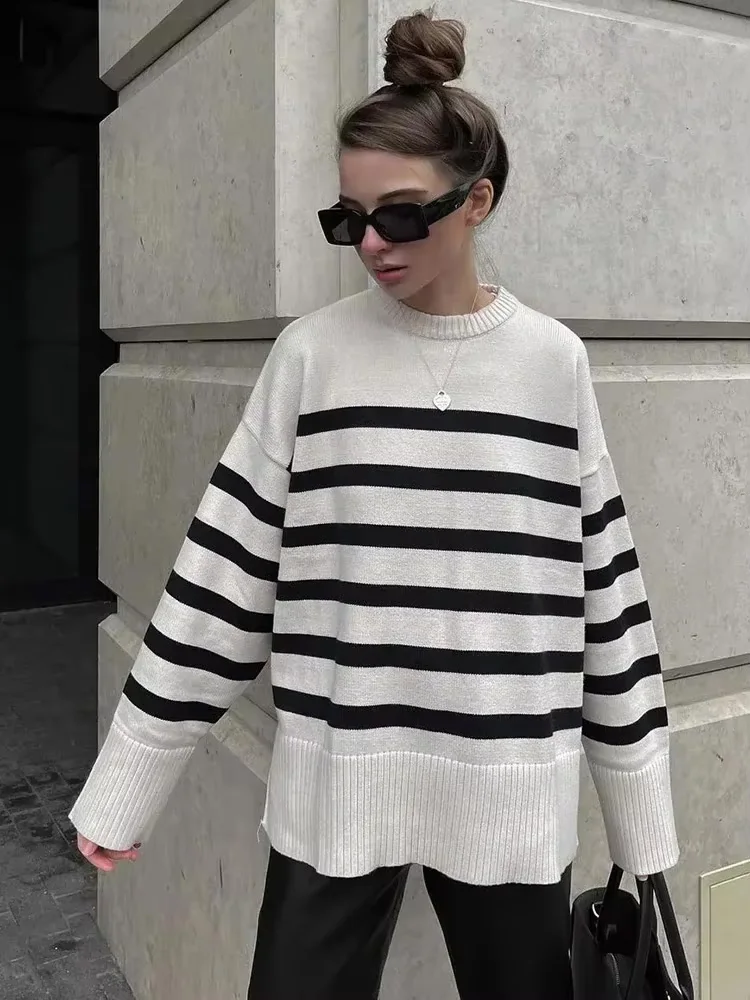
Advanced Layering Techniques: Creating Dimension and Interest
Strategic layering elevates both V-neck and crew neck styles from basic pieces to sophisticated outfit components. Understanding how different necklines interact when layered allows you to create depth while maintaining visual harmony. The principles of best necklines for layering cashmere apply across various garment types.
Cashmere Wrap Sweaters, Women's Cashmere Pullovers
$75.89 Select options This product has multiple variants. The options may be chosen on the product pageCashmere Cable Knit Sweaters, Women's Cashmere Pullovers
Price range: $111.82 through $112.93 Select options This product has multiple variants. The options may be chosen on the product page- Price range: $171.47 through $181.33 Select options This product has multiple variants. The options may be chosen on the product page
Cropped Cashmere Sweaters, Women's Cashmere Pullovers
$155.77 Select options This product has multiple variants. The options may be chosen on the product page- Price range: $87.29 through $91.47 Select options This product has multiple variants. The options may be chosen on the product page
Oversized Cashmere Sweaters, Plus Size Cashmere Sweaters, Women's V-Neck Cashmere Sweaters
$136.87 Select options This product has multiple variants. The options may be chosen on the product page
V-Neck Layering Systems: Creating Elegant Depth
V-necks excel as middle or outer layers, creating frameworks that highlight what’s worn underneath:
Professional V-Neck Layering:
1. Start with a crisp button-up shirt
2. Add a V-neck sweater, ensuring the collar points remain visible
3. Optionally top with a blazer, creating a sophisticated triple layer
4. Ensure collar points sit properly on top of the V-neck opening
Casual V-Neck Layering:
1. Begin with a crew neck t-shirt or henley as base layer
2. Add V-neck sweater, allowing the undershirt to create contrast at neckline
3. Consider an open overshirt or light jacket as final layer
4. Maintain color harmony while varying textures between layers
The versatility of V-necks in business casual cashmere applications comes from their ability to frame other necklines while creating visual interest through layered edges and lines.
Crew Neck Layering Systems: Structured Foundations
Crew necks serve as excellent foundation garments or clean finishing layers:
Collar Management with Crew Necks:
1. For button-up shirts under crew necks, tuck collar points completely under the sweater
2. Ensure the crew neck sits at or just below the base of the natural neckline
3. Consider collar type—button-down collars stay in place better under crew necks
4. A small portion of collar band showing above the crew neck creates a polished look
Outerwear Layering:
1. Use crew necks as clean base layers under open jackets or cardigans
2. The horizontal line creates visual balance under lapels and collars
3. For maximum warmth in cold weather, crew necks layer perfectly under cashmere turtlenecks
4. In transitional weather, crew necks function as outer layers over light t-shirts
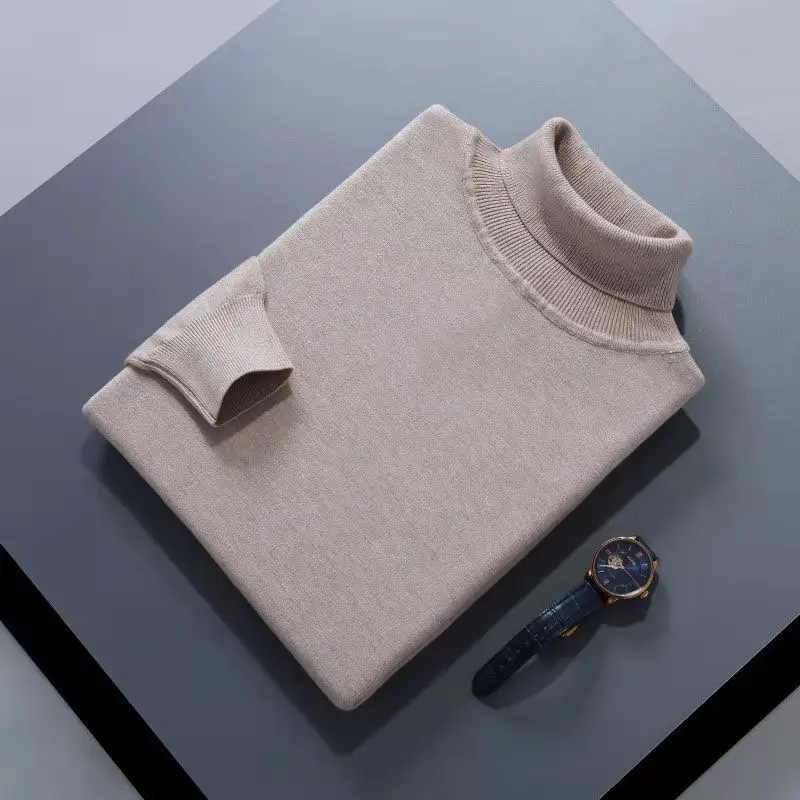
Pros and Cons: Making Your Decision
After exploring the nuances of both neckline styles, it’s helpful to directly compare their advantages and limitations to inform your choices. Whether you’re browsing men’s cashmere pullovers or considering your next wardrobe addition, understanding these trade-offs helps you make informed decisions.
V-Neck Advantages and Limitations
Advantages:
– Creates a visually elongating effect for the neck and torso
– Flatters round face shapes and shorter necks
– Provides the perfect frame for necklaces and pendants
– Offers versatile layering options, especially with collared shirts
– Adjusts perceived proportions by narrowing broad shoulders
– Often perceived as more refined or dressed-up than crew necks
Limitations:
– May expose more chest than desired for certain occasions
– Provides less warmth around the neck area in cold weather
– Requires careful consideration of appropriate depth for different contexts
– Can stretch or lose shape over time without quality construction
– Less suitable for very athletic builds where it might appear stretched
– May not provide enough structure for those seeking a more defined neckline
V-necks particularly excel in situations requiring subtle sophistication, such as business casual environments, date nights, and occasions where you want to appear polished without being overly formal. For women, the women’s cashmere pullover collection offers versatile V-neck options that transition seamlessly between professional and social settings.
Crew Neck Advantages and Limitations
Advantages:
– Offers timeless, classic appeal that never goes out of style
– Provides more warmth and coverage around the neck
– Creates a clean, minimalist look that works with multiple styles
– Typically more durable and less prone to stretching out of shape
– Flatters long necks and angular face shapes
– Serves as an excellent canvas for patterns, logos, or graphic designs
Limitations:
– Can make short necks appear shorter without proper styling
– Limits options for showcasing necklaces or pendants
– Creates a more casual impression in most contexts
– May appear bulky when layered under certain garments
– Provides less versatility with collared shirts
– Can emphasize broad shoulders or chest width
Crew necks shine in casual settings, outdoor activities, athletic contexts, and situations where comfort and practicality take precedence. The structured simplicity of crew necks also makes them excellent options for those who prefer minimalist wardrobes or clean lines, as seen in the versatile cashmere vests that work beautifully with both neckline styles.
Neckline Selection Based on Occasion and Setting
Context matters significantly when choosing between neckline styles. Here’s a guide to help you select the most appropriate neckline for various settings:
| Occasion | Recommended Neckline | Rationale |
|---|---|---|
| Business Formal | Shallow V-neck or Crew | V-neck under suit creates visual interest; crew neck offers clean formality |
| Business Casual | Medium V-neck | Balances professionalism with approachable style |
| Creative Workplace | Either (personal choice) | Express personal style while maintaining professionalism |
| Casual Social Events | Either (personal choice) | Choose based on personal comfort and outfit coordination |
| Outdoor/Active | Crew Neck | Provides better coverage and durability for movement |
| Evening Events | Deep V-neck | Creates elegant line for more formal or sophisticated occasions |
| Cold Weather | Crew Neck | Offers better warmth and protection around the neck |
| Layered Outfits | V-neck for middle layers; Crew for base | V-necks frame other necklines; crews provide clean foundation |
Industry norms also influence appropriate choices—conservative professions like finance or law typically favor more modest necklines, while creative fields allow greater flexibility. Understanding how to select the best neckline style for specific occasions enhances your ability to dress appropriately across contexts.
Premium Quality Indicators: What Makes a Superior Neckline
The difference between an average and exceptional neckline often comes down to construction details that might not be immediately visible but significantly impact wear, comfort, and longevity.
When evaluating quality in neckline construction, look for:
- Reinforced Stitching: Multiple rows of stitching at stress points, particularly at the bottom of a V-neck
- Clean Finishing: No exposed seams or raw edges that could irritate the sensitive neck area
- Proportional Ribbing: Ribbed collars that maintain consistent width and tension
- Recovery Capacity: Necklines that return to original shape after stretching
- Symmetrical Construction: Even, balanced appearance from all angles
- Flat Seams: No bulging or puckering around seam lines
- Colorfast Edges: Consistent coloration throughout the neckline, even after washing
Premium garments like those from Estate Cloth feature these quality hallmarks, which become particularly evident when comparing brushed versus classic cashmere finishes. The investment in superior construction pays dividends in both appearance and longevity.
Frequently Asked Questions
Are certain necklines better for specific body types?
Yes, necklines can strategically enhance your natural proportions. V-necks generally flatter individuals with shorter necks, rounder faces, or broader shoulders by creating a vertical, elongating effect. Crew necks typically complement those with longer necks, angular faces, or narrower shoulders by creating horizontal balance. However, personal preference and comfort should always take precedence over general guidelines—the most flattering neckline is ultimately the one you feel most confident wearing.
How do I choose the right V-neck depth?
The appropriate V-neck depth depends on several factors:
- Context: Shallower Vs for professional settings; deeper Vs for casual or evening wear
- Proportion: Your height and neck length should influence depth (taller individuals can generally wear deeper Vs)
- Purpose: Consider whether you’re highlighting jewelry, layering, or creating a specific effect
- Comfort: Select a depth that feels secure and doesn’t require constant adjustment
A good rule of thumb is that business settings typically call for Vs that end no lower than 2-3 inches below the collarbone, while casual contexts allow more flexibility.
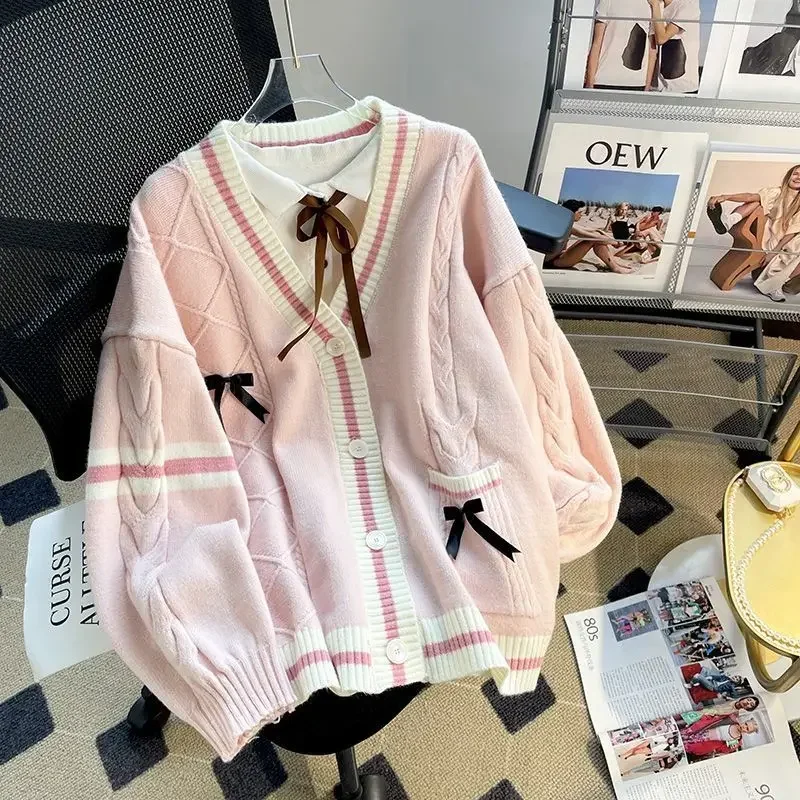
Are certain necklines more durable than others?
Generally, crew necks tend to be more durable than V-necks due to their continuous circular construction. The point of a V-neck represents a structural vulnerability that requires reinforced construction. However, with high-quality materials and proper construction techniques, both styles can offer excellent longevity. Premium cashmere garments typically feature reinforced necklines with proper tension control to maintain shape over years of wear.
Can I wear both necklines with a suit or formal wear?
Both necklines can work with suits and formal wear, but they create different effects. V-necks under suits create a lengthening effect and frame the tie or shirt collar nicely. They’re particularly effective for shorter individuals seeking a lengthening effect. Crew necks create a cleaner, more minimalist look under blazers and can appear more contemporary. For the highest level of formality, shallow V-necks or crew necks in fine-gauge knits tend to be most appropriate.
How do I care for V-neck and crew neck garments to maintain their shape?
To preserve neckline shape and integrity:
- Always fold rather than hang knit garments with V or crew necks
- When washing, use gentle cycles and lay flat to dry
- Avoid pulling garments over your head while wet, which can stretch the neckline
- For V-necks, fold along the center line to maintain the V-shape
- For crew necks, store folded with tissue paper to maintain the circular shape
- Steam rather than iron necklines to avoid flattening the natural structure
With proper care, quality necklines should maintain their shape and appearance for the life of the garment.
By considering your personal features, style preferences, and specific needs, you can make informed choices between V-neck and crew neck styles. Both offer distinct advantages for different situations, making them valuable components in a well-rounded wardrobe. The key is understanding when and how to leverage each style’s unique characteristics to enhance your overall appearance.

